What we´re reading…
This month’s key articles selected by Ryan Chadha, Prashant Bhangui, Uzung Yoon, David Victor, Felipe Alconchel, and Tamer Shaker.
Annals of Surgery
Blood Salvage and Autotransfusion Does Not Increase the Risk of Tumor Recurrence After Liver Transplantation for Advanced Hepatocellular Carcinoma
Previous studies have consistently demonstrated the safety of autotransfusion of salvaged and leukoreduced blood during liver transplantation for HCC. However, the effects of this technique remained unknown for advanced HCC. Read more.
Transplant International
Clinical Impact of Mild to Moderate Pulmonary Hypertension in Living-Donor Liver Transplantation
Severe pulmonary hypertension (PHT) is a contraindication to liver transplantation (LT); however, the prognostic implication of mild to moderate PHT in living-donor LT (LDLT) is unknown. Read more.
World Journal of Gastroenterology
Perioperative blood transfusion decreases long-term survival in pediatric living donor liver transplantation
The impact of perioperative blood transfusion on short- and long-term outcomes in pediatric living donor liver transplantation (PLDLT) must still be ascertained, mainly among young children. Clinical and surgical postoperative complications related to perioperative blood transfusion are well described up to three months after adult liver transplantation. Read more.
Transplantation
Safety and Reactogenicity of 2 Doses of SARS-CoV-2 Vaccination in Solid Organ Transplant Recipients
We studied the safety and reactogenicity SARS-CoV-2 mRNA vaccines in transplant recipients because immunosuppressed patients were excluded from vaccine trials. Read more.
Clinical Transplantation
An evaluation of the safety and preliminary efficacy of peri- and post- operative treprostinil in preventing ischemia and reperfusion injury in adult orthotopic liver transplant recipients
Orthotopic liver transplantation (OLT) is the only treatment option for various end-stage liver diseases. Ischemia and reperfusion (I/R) injury is one of the unavoidable complications/conditions in OLT. Read more.
Liver Transplantation
Differences between infectious disease events in first liver transplant versus re-transplantation in the Swiss Transplant Cohort Study
Re-transplantation after graft failure is increasingly performed, but inferior graft survival, patient survival and quality of life has been reported. The role of infectious disease (ID) events in this less favorable outcome is unknown. Read more.
Transplantation
Coagulation Factors Accumulate During Normothermic Liver Machine Perfusion Regardless of Donor Type and Severity of Ischemic Injury
Coagulation factors may inform on liver function during normothermic machine perfusion (NMP). We investigated whether graft ischemic injury impairs the accumulation of (anti)coagulation factors during NMP of porcine and human livers. Read more.
Clinical Transplantation
Donor-recipient Body Size Mismatch Has No Impact on Outcomes After Deceased Donor Whole Liver Transplantation: Role of Donor Liver Size Measurement
The role of donor-recipient body size mismatch (DRSM) on outcomes after whole liver transplantation (LT) is not clearly defined. At our center, in presence of considerable DRSM, objective assessment of the donor liver by a radiology or intraoperative evaluation by procuring surgeon was incorporated. Read more.
New England Journal of Medicine
Hypothermic Machine Perfusion in Liver Transplantation — A Randomized Trial
Transplantation of livers obtained from donors after circulatory death is associated with an increased risk of nonanastomotic biliary strictures. Hypothermic oxygenated machine perfusion of livers may reduce the incidence of biliary complications, but data from prospective, controlled studies are limited. Read more.







